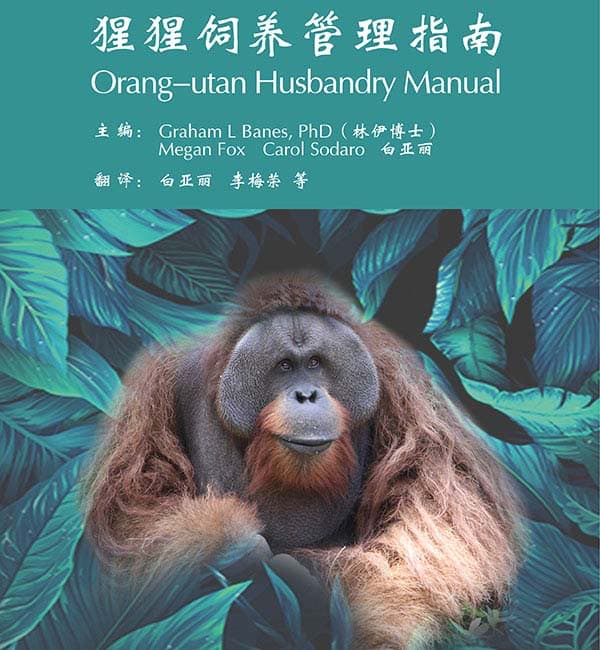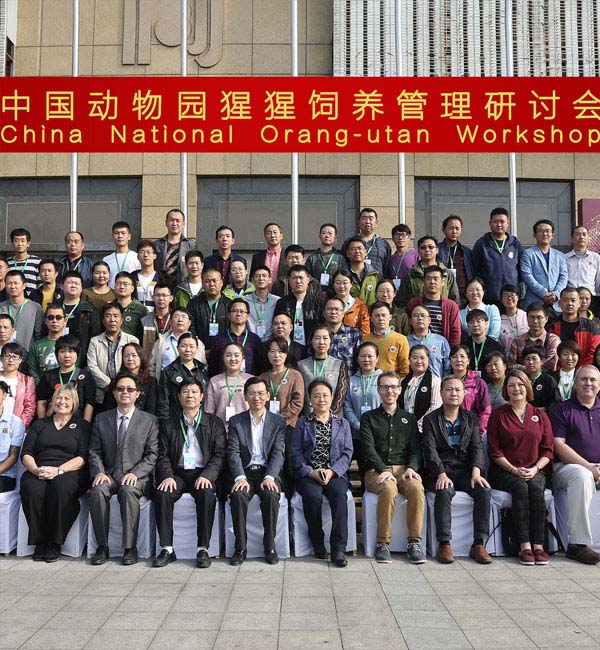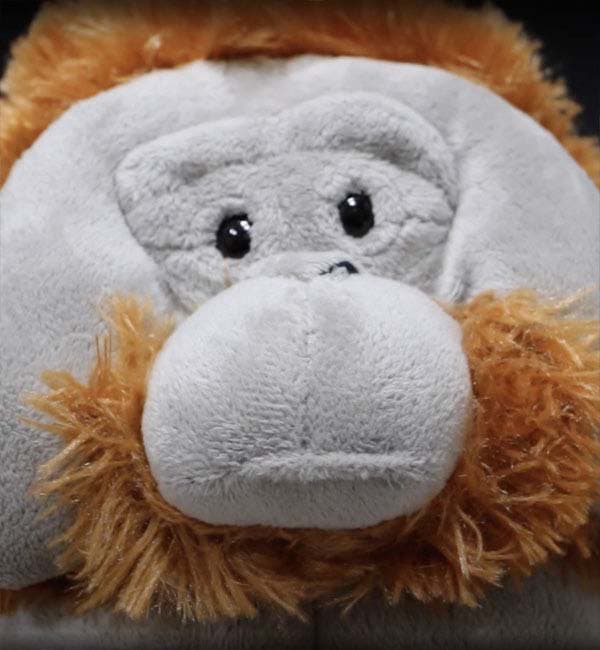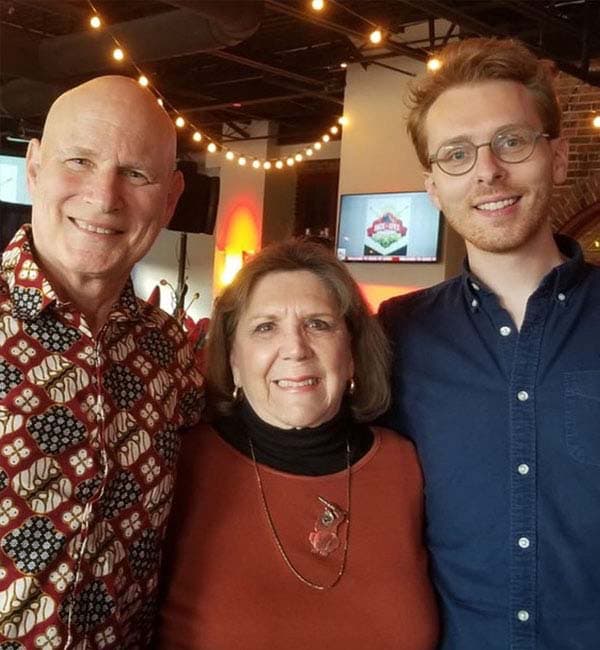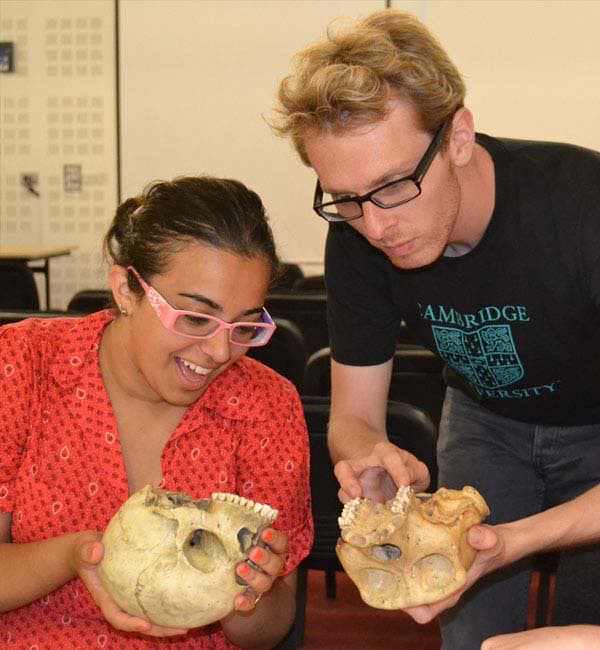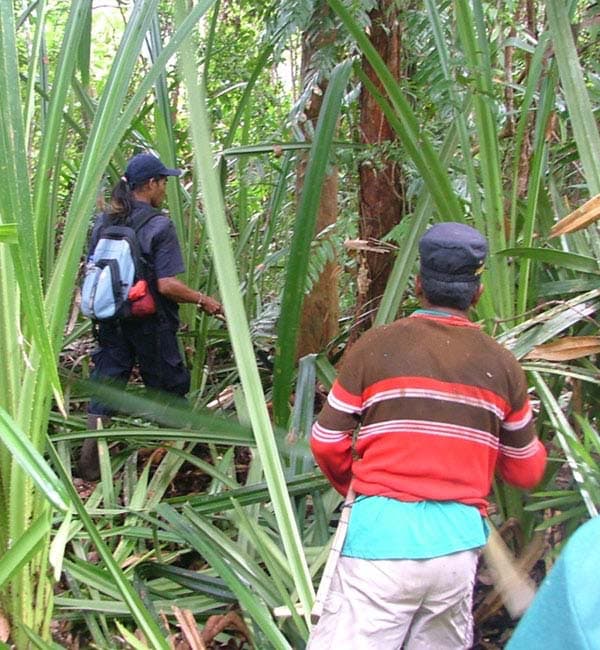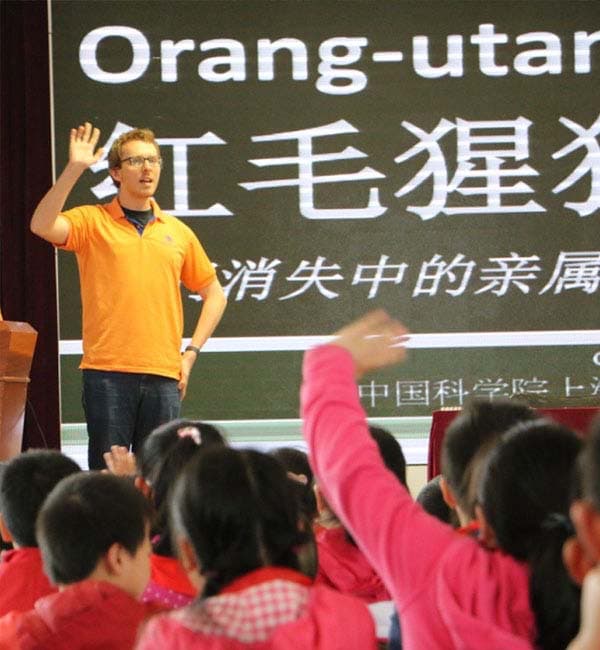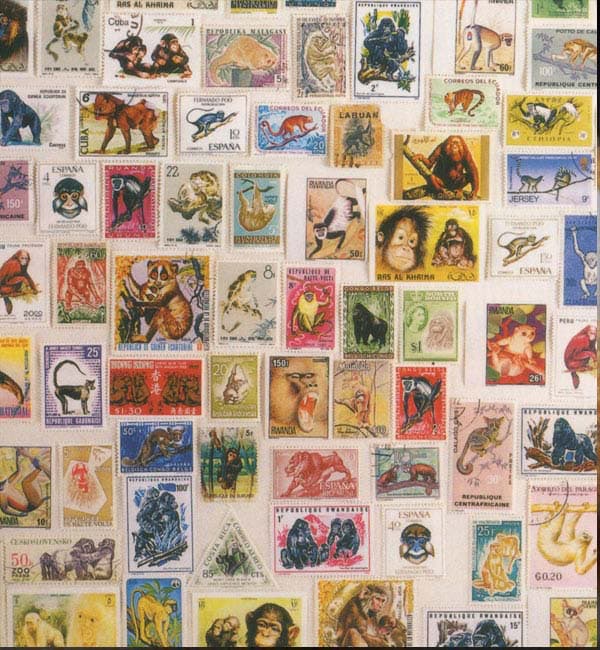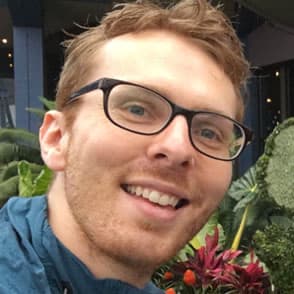
About Me
My research combines field, genomic and computational approaches to understand what happens when humans interfere with evolution. In particular, I study inbreeding and outbreeding depression, and how these might be linked to disease ecology.
Orang-utans (Pongo spp.) are my primary taxa of focus, having studied these species since 2007. I spent my formative years in Tanjung Puting National Park, Indonesian Borneo, where I studied wild and ex-captive orang-utans. For my B.Sc. (Hons) thesis at the University of Aberdeen, Scotland, and following study at the University of British Columbia, Canada, I led line transect surveys across the park to determine orang-utan population density. Then, using molecular methods, I inferred the subspecies composition of reintroduced orang-utans for my M.Phil. by Research degree at Darwin College, University of Cambridge. Finally, I completed a Ph.D. in Biological Anthropology, also at Cambridge, for which I performed genetic analyses of orang-utan social structure, mate choice and reproductive success. With its co-founder, Biruté Galdikas (1978), and Gary Shapiro (1985), I am one of only three Western scientists to earn their Ph.D. at Camp Leakey in Tanjung Puting National Park. Much more importantly, my doctoral thesis was signed by Dolly Parton, who asked if I wrote something nice about her in there.
I then spent two years as a post-doctoral scientist at the Max Planck Institute for Evolutionary Anthropology in Leipzig, Germany; initially, in the Department of Primatology, before moving to the Department of Evolutionary Genetics. Thereafter, I served three-and-a-half years as a President's International Fellow of the Chinese Academy of Sciences, at the CAS-MPG Partner Institute for Computational Biology in Shanghai, China. As a student and post-doc, I was privileged to work under the mentorship of Paul Racey, Leo Howe, Linda Vigilant and Philipp Khaitovich, and with Biruté Galdikas. I joined the faculty at the University of Wisconsin–Madison in 2016, and the Wisconsin National Primate Research Center in 2019. I departed UW-Madison in May 2022, to establish a new independent laboratory in Madison, WI with support from the US federal Institute for Museum and Library Services.

Dolly: "Well, are you going to hold me or that old book?"
Research
All of my work is applied, with the goal of effecting real-world sustainability outcomes. In my research group, we "dream big" and target pressing problems, with a view to making broader impacts beyond the confines of our laboratory. We work towards long term – not short term – goals, as driven by The Wisconsin Idea.
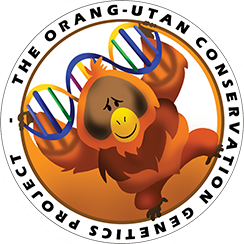
OUTBREEDING DEPRESSION IN ORANG-UTANS
Orang-utans (Pongo spp.) comprise three genetically, reproductively and geographically isolated species, which last shared a common ancestor ~3.2 million years ago. The Bornean species is further divided into three subspecies, which have markedly differentiated over tens of thousands of years. In the face of increased anthropogenic disturbance, however, we observed that orphaned and displaced orang-utans are being translocated and reintroduced into the 'wrong' populations in-situ (Scientific Reports, 2016). Moreover, we found that orang-utans in zoos comprise all known taxa, which were – and in some cases, continue to be – indiscriminately hybridized over decades. Orang-utans therefore present an ideal model for the study of outbreeding depression in mammals, which we suspect to manifest as increased disease susceptibility. Since 2008, I have collected ~3,200 DNA samples from wild, ex-captive and zoo-housed orang-utans globally; these now comprise the largest biomaterials collection in the United States from a critically endangered mammal. Together, they form the basis of The Orang-utan Conservation Genetics Project: our effort to use these samples to understand the effects of outbreeding, develop policy for the management of displaced orang-utans, and ensure the sustainability of ex-situ collections in zoos (BMC Genomics, 2020). This work has been funded with ~$2.1 million to date; primarily from the National Natural Sciences Foundation of China (Grant #31450110070 and #91331203), the Arcus Foundation (2014, 2017), the Association of Zoos and Aquariums, the Eppley Foundation for Research, Orangutan Outreach, Sacramento Zoo, Como Park Zoo & Conservatory, the ABQ BioPark, Cameron Park Zoo and The Ronna Noel Charitable Trust. The Project is now funded through 2024 by a National Leadership Grant from the Institute for Museum and Library Services.
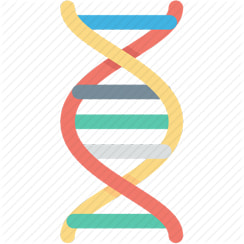
INBREEDING DEPRESSION AND 'GENETIC RESCUE'
In a developing research project, we are investigating the opposite issue to that observed in orang-utans. Our model species is wholly extinct in the wild, and fewer than ~200 remain in a single captive population. Having descended from a small number of founders, however, their population is genetically depauperate, and inbreeding depression is apparent due to close genetic relatedness of mated individuals. Through reduced-representation and long-read sequencing approaches, we're investigating precisely how genetically similar they are, and what options there might be for recovering their imperiled population. Ultimately, we aim to identify a closely related taxon for hybridization and "genetic rescue", facilitating eventual reintroduction of this species to the wild.
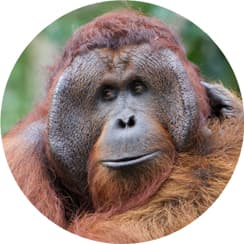
SEXUAL SELECTION AND MATE CHOICE
Despite being one of the most prominent ornaments in the animal kingdom, the purpose of male orang-utan cheek pads is poorly understood. The theory that cheek pads make dominant males more attractive to females — and thus result in them fathering more offspring — is complicated, in that socially subordinate, non-cheek-padded males are also able to achieve paternities. Through molecular parentage analyses in Tanjung Puting National Park, we found that male bimaturism is likely an evolutionarily stable strategy, in which unflanged males simply bide their time until periods of rank instability (Behavioral Ecology and Sociobiology, 2015). Yet many questions remain about the underlying mechanisms that facilitate cheek pad development. Thus, since 2014, we have been analysing cheek pad, sweat and urine samples using GC-MS to determine potential compounds that might serve as chemical signals. This effort was profiled in 2014 on PBS (US) and Channel 4 (UK) in the documentary series, Sex in the Wild: Orang-utans. This work has been funded by the Royal Geographical Society (with Institute of British Geographers), the Royal Scottish Geographical Society, the Gilchrist Educational Trust, the Arcus Foundation, the Max Planck Society, the German Academic Exchange Service, Hendrix College (in collaboration with Tom Goodwin) and with support to the WNPRC from the National Institutes of Health (P51OD011106).
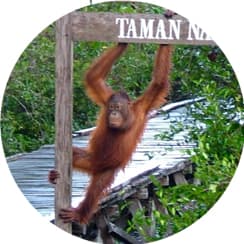
HABITAT LOSS, EXPLOITATION AND FRAGMENTATION
As part of a range-wide census of orang-utan populations, I led the line-transect surveys of Tanjung Puting National Park. Pooled data from across the island led to publication of the 2016 Population and Habitat Viability Assessment, which guided the new "Strategy and Orangutan Action Plan" (SRAK) of the government of the Republic of Indonesia. Our consortium observed that only ~80,000 orang-utans remain on Borneo; fewer than ~15,000 are thought to exist on Sumatra. We later performed the first integrative trend analysis of a great ape species on Borneo, concluding that orang-utan populations have declined at a rate of 25% over the last 10 years (Scientific Reports, 2017). We have since determined that 1~00,000 orang-utans were potentially killed in the wild in just 17 years, from 1999-2015 (Current Biology, 2018). These findings led to a change in Bornean orang-utan conservation status, from 'Endangered' to 'Critically Endangered' in 2016. Prior to this, I studied female reproductive parameters in displaced and reintroduced orang-utans, contributing data that were published in Primates (2012). This work was supported by the Orangutan Foundation UK, the University of Aberdeen, the John Reid Trust, the Primate Society of Great Britain, the Arcus Foundation, the Orang Utan Republik Foundation and the University of Cambridge.
Publications
My work has been featured in Science, ScienceShots, The Washington Post, The Daily Mail (both here and here), IFL Science, Mongabay, Psychology Today, and Serious Science, among more than 200 other English-language outlets. Most recently, in August 2022, we made the front page of the Wisconsin State Journal. Internationally, my research has been covered by Germany's Leipziger Volkszeitung, by Poland's national daily newspaper, Gazeta Wyborcza, and in the Hebrew edition of Mishpacha. In Chinese, I was profiled by The New York Times.
| PEER-REVIEWED ARTICLES Banes lab members in bold; ▪ indicates student; ▴ indicates post-doc |
|---|
| • Meijaard, E., Sheil, D., Sherman, J., Chua, L., Ni'Matullah, S., Wilson, K., Ancrenaz, M., Liswanto, D., Wich, S. A., Goossens, B., Kühl, H. S., Voigt, M., Rayadin, Y., Kurniawan, Y., Trianto, A., Priatna, D., Banes, G. L., Massingham, E., Payne, J. and Marshall, A. J. (2022). Restoring the orangutan in a Whole- or Half-Earth context. Oryx, 1-12, DOI: 10.1017/S003060532200093X. |
| • Banes, G. L., Fountain, E. D.▴, Karklus, A.▪, Fulton, R. S., Antonacci-Fulton, L. and Nelson, J. O. (2022). Nine out of ten samples were mistakenly switched by The Orang-utan Genome Consortium. Scientific Data, 9, 485, DOI: 10.1038/s41597-022-01602-0. |
| • Santika, T., Sherman, J., Voigt, M., Ancrenaz, M., Wich, S. A., Wilson, K. A., Possingham, H., Massingham, E., Seaman, D. J. I., Ashbury, A. M., Azvi, T. S., Banes, G. L., Barrow, E. J., Burslem, D. F. R. P., Delgado, R. A., Erman, A., Fredriksson, G., Goossens, B., Houghton, M., Indrawan, T. P., Jaya, R. L., Kanamori, T., Knott, C. D., Leiman, A., Liswanto, D., Mach, M., Marshall, A. J., Martin, J. G. A., Midora, L., Miller, A., Milne, S., Morgans, C., Nardiyono, N., Perwitasari-Farajallah, D., Priatna, D., Risch, R., Riyadi, G. M., Russon, A. E., Sembiring, J., Setiawan, E., Sidiq, M., Simon, D., Spehar, S., Struebig, M. J., Sumardi, I., Tjiu, A., Wahyudi, R., Yanuar, A and Meijaard, E. (2022). Effectiveness of 20 years of conservation investments in protecting orangutans. Current Biology, 32(8), 1754-1763.e6, DOI: 10.1016/j.cub.2022.02.051. |
| • Tan, S., Ma, H., Wang, J., Wang, M., Wang, M., Yin, H., Zhang, Y., Zhang, X., Shen, J., Wang, D., Banes, G. L., Zhang, Z., Wu, J., Huang, X., Chen, H., Ge, S., Chen, C. L., & Zhang, Y. E. (2021). DNA transposons mediate duplications via transposition-independent and -dependent mechanisms in metazoans. Nature Communications, 12(1), 4280, DOI: 10.1038/s41467-021-24585-9. |
| • Fountain, E. D.▴, Zhou, L-C., Liu, Q-X., Karklus, A.▪, Meyers, J., Fontanilla, I. K., Rafael, N., Pei, E-L., Yu, J-Y., Zhang, Q., Zhu, X-L., Yuan, Y-H. and Banes, G. L. (2021). Cross-species application of Illumina iScan microarrays for cost-effective, high-throughput SNP discovery. Frontiers in Ecology and Evolution, 9:629252, DOI: 10.3389/fevo.2021.629252. |
| • Ma, Y., Liu, S., Gao, J., Chen, C., Zhang, X., Yuan, H., Chen, Z., Yin, X., Sun, C., Mao, Y., Zhou, F., Shao, Y., Liu, Q., Xu, J., Cheng, L., Yu, D., Li, P., Yi, P., He, J., Geng, G., Guo, Q., Si, Y., Zhao, H., Li, H., Banes, G. L., Liu, G., Nakamura, Y., Kurita, R., Huang, Y., Wang, X., Wang, F., Fang, G., Engel, J. D., Shi, L., Zhang, Y. E. and Yu, D. (2021). Genome-wide analysis of pseudogenes reveals HBBP1's human-specific essentiality in erythropoiesis and implication in β-thalassemia. Developmental Cell, 56, 1-16, DOI: 10.1016/j.devcel.2020.12.019. |
| • Banes, G. L., Fountain, E. D.▴, Karklus, A.▪, Huang, H-M., Jang-Liaw, N-H., Burgess, D. L., Wendt, J., Moehlenkamp, C. and Mayhew, G. F. (2020). Genomic targets for high-resolution inference of kinship, ancestry and disease susceptibility in orang-utans (genus: Pongo). BMC Genomics, 21:873, DOI: 10.1186/s12864-020-07278-3. |
| • Rainer, H., Lanjouw, A., Ross, S., Llano Sánchez, K. and Banes, G. L. (2020). Drivers of the illegal trade in live apes. In: Rainer, H., White, A. and Lanjouw, A. (Eds.). State of the Apes: Killing, Capture, Trade and Conservation. Cambridge University Press: Cambridge, pp. 96-129. |
| • Wise, S., Durham, D. and Banes, G. L. (2020). The campaign for nonhuman rights and the status of captive apes. In: Rainer, H., White, A. and Lanjouw, A. (Eds.). State of the Apes: Killing, Capture, Trade and Conservation. Cambridge University Press: Cambridge, pp. 230-262. |
| • Banes, G. L., Chua, W, Elder, M. L. and Kao, J. (2018). Orang-utans Pongo spp in Asian zoos: current status, challenges and progress towards long-term population sustainability. Invited submission to International Zoo Yearbook, 52, 1-14, DOI: 10.1111/izy.12178. |
| • Voigt, M., Wich, S. A., Ancrenaz, M., Meijaard, E., Abram, N., Banes, G. L., Campbell-Smith, G., d’Arcy, L. J., Delgado, R. A., Erman, A., Gaveau, D., Goossens, B. Heinicke, S. Houghton, M. Husson, S. J., Leiman, A., Llano Sanchez, K., Makinuddin, N., Marshall, A. J., Meididit, A., Miettinen, J., Mundry, R., Musnanda, Nardiyono, Nurcahyo, A., Odom, K., Panda, A., Prasetyo, D., Priadjati, A., Purnomo, Rafiastanto, A., Russon, A. E., Santika, T., Sihite, J., Spehar, S., Struebig, M., Sulbaran-Romero, E., Tjiu, A., Wells, J., Wilson, K. A. and Kühl, H. S. (2018). Global demand for natural resources eliminated more than 100,000 Bornean orangutans. Current Biology, 28, 1-9, DOI: 10.1016/j.cub.2018.01.053. |
| • Santika, T., Ancrenaz, M., Wilson, K., Spehar, S., Abram, N., Banes, G. L., Campbell-Smith, G. Curran, L., d'Arcy, L., Delgado, R. A., Erman, A., Goossens, B., Hartanto, H., Houghton, M. Husson, S. J., Kühl, H. S., Lackman, I., Leiman, A., Llano Sanchez, K., Makinuddin, N. Marshall, A. J., Meididit, A., Mengersen, K., Musnanda, Nardiyono, Nurcahyo, A. Odom, K., Panda, A., Prasetyo, D., Purnomo, Rafiastanto, A., Raharjo, S., Ratnasari, D., Russon, A. E., Santana, A. H., Santoso, E., Sapari, I., Sihite, J., Suyoko, A., Tjiu, A., Utami-Atmoko, S. S., van Schaik, C. P., Voigt, M., Wells, J., Wich, S. A., Willems, E. P. and Meijaard, E. (2017). First integrative trend analysis for a great ape species in Borneo. Scientific Reports, 7:4839, DOI: 10.1038/s41598-017-04435-9. |
| • Banes, G. L. and Galdikas, B. M. F. (2016). Effective characterisation of the complete orang-utan mitochondrial DNA control region, in the face of persistent focus in many taxa on shorter hypervariable regions. PLOS ONE, 11(12):e0168715, DOI: 10.1371/journal.pone.0168715. |
| • Banes, G. L., Galdikas, B. M. F. and Vigilant, L. (2016). Reintroduction of confiscated and displaced mammals risks outbreeding and introgression in natural populations, as evidenced by orang-utans of divergent subspecies. Scientific Reports, 6:22026, DOI: 10.1038/srep22026. Now available in Spanish. |
| • Banes, G. L., Galdikas, B. M. F. and Vigilant, L. (2015). Male orang-utan bimaturism and reproductive success at Camp Leakey in Tanjung Puting National Park, Indonesia. Behavioral Ecology and Sociobiology, 69(11), 1785-1794, DOI: 10.1007/s00265-015-1991-0. |
| • Kuze, N., Dellatore, D., Banes, G. L., Pratje, P., Tajima, T. and Russon, A. E. (2012). Factors affecting reproduction in rehabilitant female orangutans: Young age at first birth and short inter-birth interval. Primates, 53, 181-192, DOI: 10.1007/s10329-011-0285-z. |
| PEER-REVIEWED BOOKS |
|---|
| • Banes, G. L. (2012; paperback 2014; co-editions to 2012-2019). The Kingfisher Encyclopedia of Life. Macmillan Children's Books: London. Now published in 13 languages and 18 territories, including the US and Canada, Russia, Slovakia, Colombia, Germany, Spain, Brazil, the Czech Republic, Poland, Portugal, Georgia, Turkey, Lebanon, Israel, Romania, Taiwan, and mainland China. |
Outreach
I have two primary outreach interests: recruiting students from communities traditionally underserved in science, and augmenting welfare conditions for great apes in zoos abroad. To date, I have visited 200+ schools as an invited speaker, and frequently open my laboratory for outreach days. Since 2013, I have visited and worked with more than 190 zoos across China, where I am known as 林伊 (Lín Yī), to assist in welfare, husbandry and management of all great apes.

Chinese-language Orang-utan Husbandry Manual
With Bai Yali of Nanjing Hongshan Forest Zoo, I initiated the Chinese-language Orang-utan Husbandry Manual, for which I served as Editor-in-Chief. We solicited and edited chapters from leading international experts in orang-utan captive care. The manual, which was thoroughly peer-reviewed, was published in China in 2018 and is the first Husbandry Manual in the Chinese language for a non-endemic species.
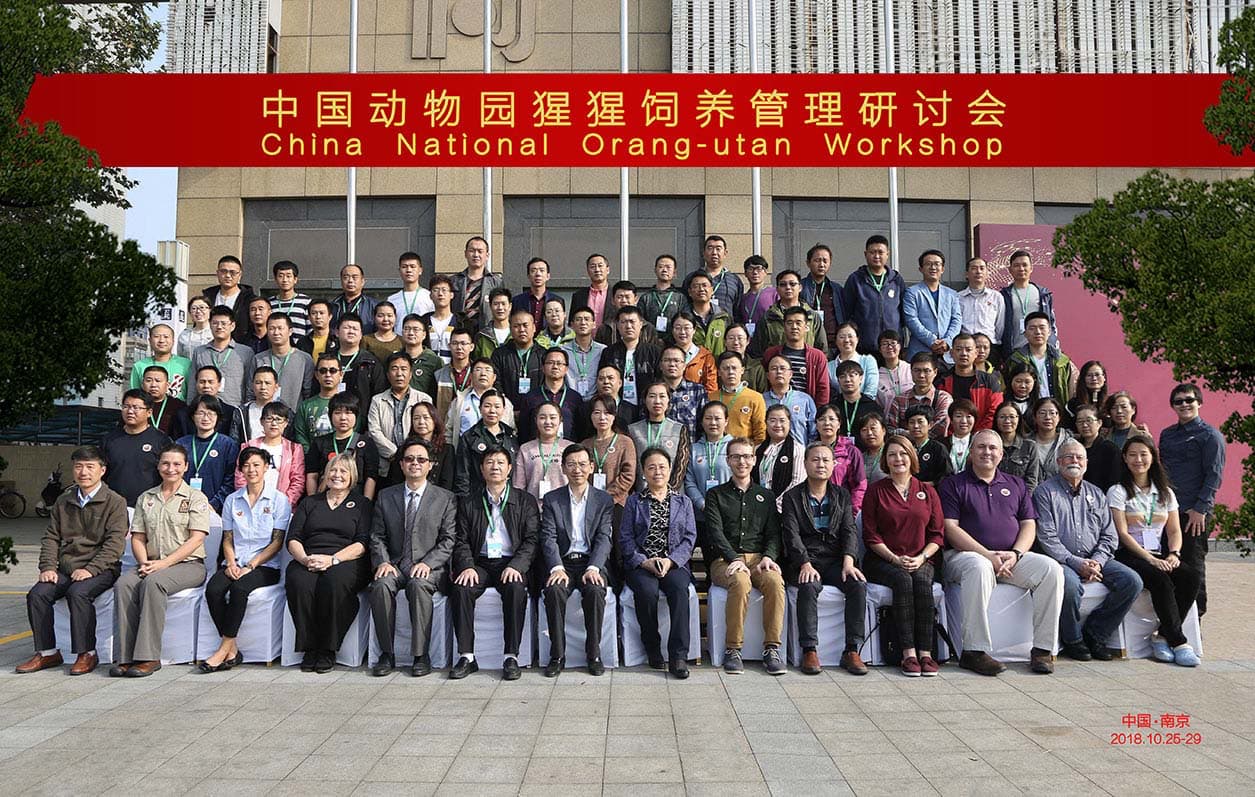
China National Orang-utan Workshop
In October 2018, with the Chinese Association of Zoological Gardens, I co-hosted the China National Orang-utan Workshop at Nanjing Hongshan Forest Zoo. This was the first ever government-sponsored national workshop in China for a non-endemic species. The Workshop was attended by 70+ staff from 37 Chinese zoos — including all those housing orang-utans in the country — plus a delegation of seven experts from zoos across the US.
Waiting for the Centrifuge
My video, Waiting for the Centrifuge, offers a light-hearted introduction to The Orang-utan Conservation Genetics Project, and won "Most Comical" in DNA Genotek's "'"Express Your Groove Gene" contest.
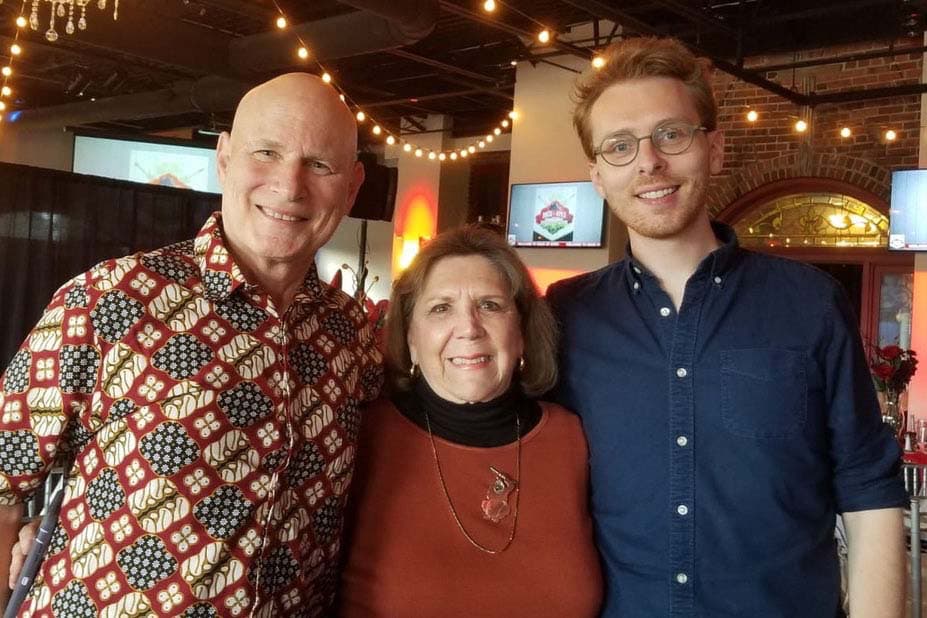
Rock of Apes
Until the COVID-19 pandemic, I spoke annually at the Rock of Apes fundraiser in Denver, CO, alongside Dr Gary Shapiro (left) and Patti Ragan (centre). The event (which will eventually return for its seventh year) is organised by the inimitable Ronna Phelps, who developed the first nationally and internationally distributed palm oil-free body care line. Visit Ronna's new venture, Pongo Lifestyle.
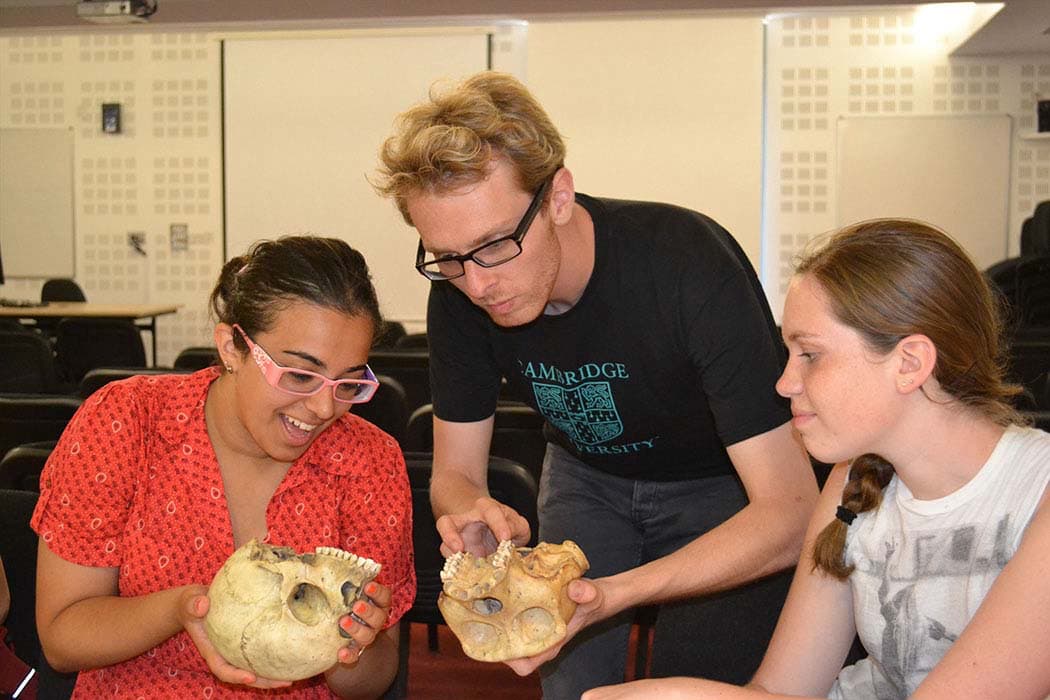
Summer teaching and outreach in schools
From 2009-2015, I served on the faculty of the summer school at Jesus College, University of Cambridge, teaching Zoology every July and August. I also worked on the subsequent French-language programme in Paris, operated at the Lycée Notre Dame de Sion. In Wisconsin, I frequently lead inquiry-based activities for high-school students and teachers.
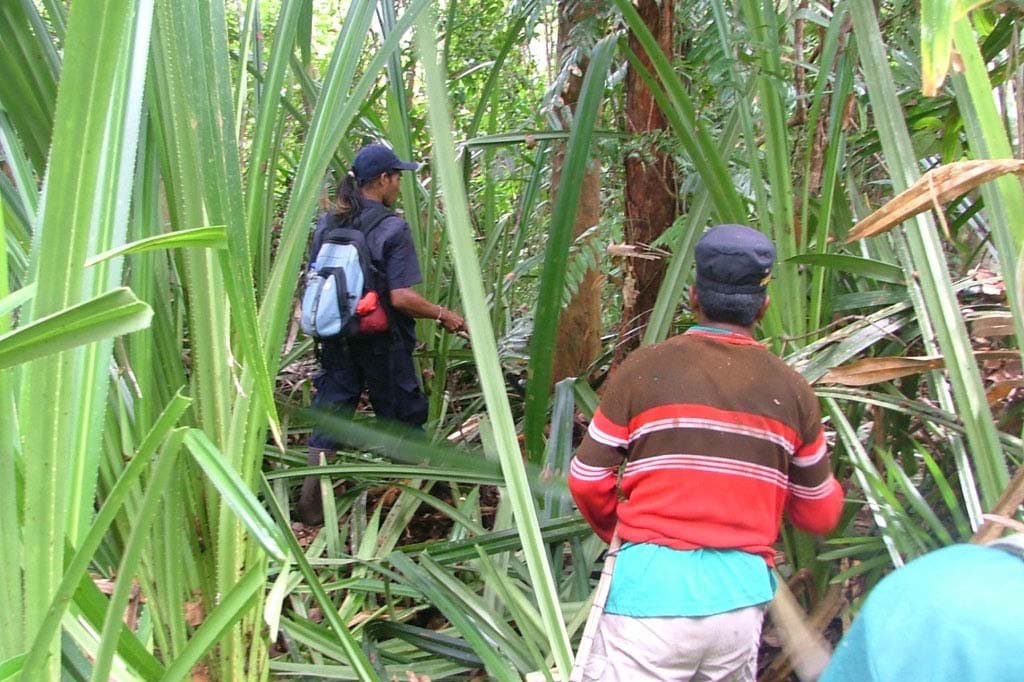
Training in field methods in biology
I have trained more than 40 students and local people in Indonesia and Malaysia since 2008, building capacity for scientific research in orang-utan range countries. I have also led training courses for Western students in Indonesia, facilitating the field work needed for their research projects.

Conservation education in China
I have visited around 50 elementary and high schools in China to deliver a conservation education programme. Through the lens of an orang-utan, students learn about the importance of sustainable living and the steps that they can take to respect and protect great apes.
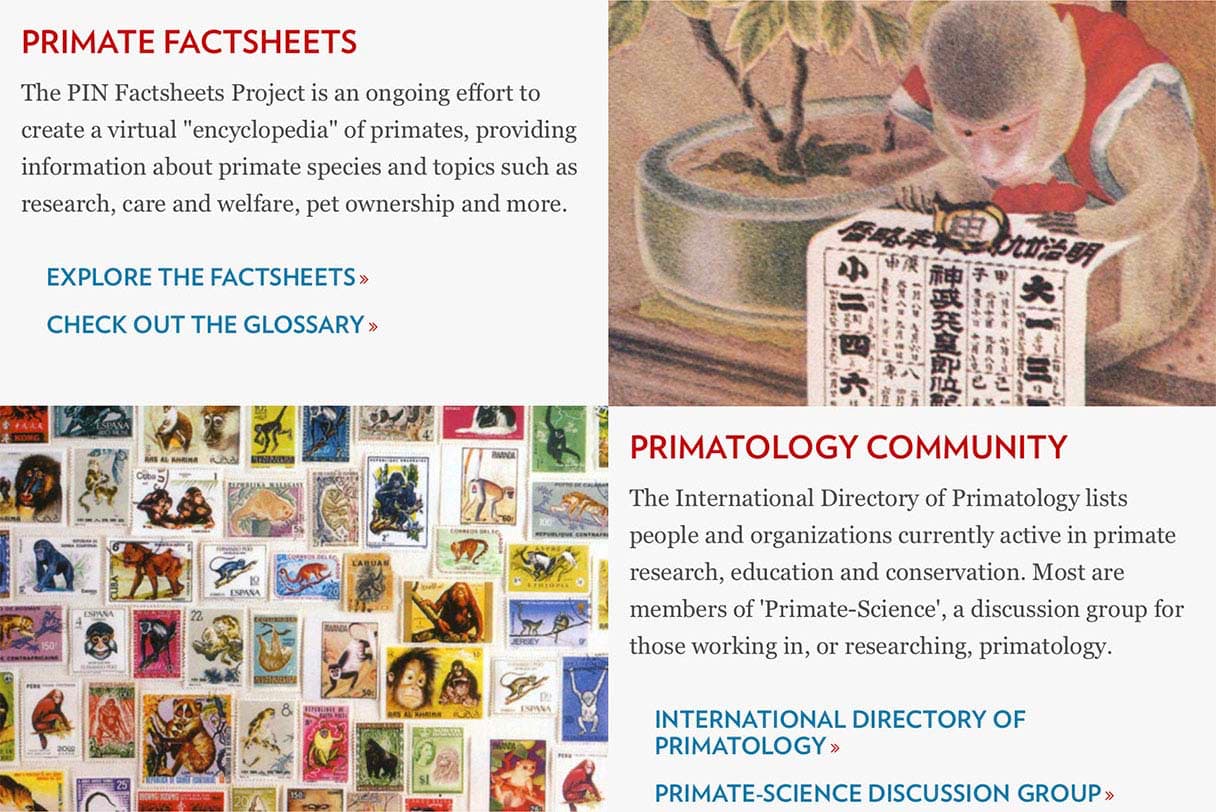
Primate Info Net
With Jordana Lenon, our Public Information and Outreach Specialist, I am excited to maintain Primate Info Net, the Center's principal outreach and education endeavour. Originally launched in 1995, "PIN" received more than 18.6 million hits annually at its peak. With the enthusiastic support of our director, we are slowly re-building the portal from the ground up, with a view to meeting the needs of a new generation of primatologists.
Contact Me
Please note that I am unable to accept new students until Fall 2023. Nonetheless, I'll be happy to hear from anyone with mutual interests in conservation science!
